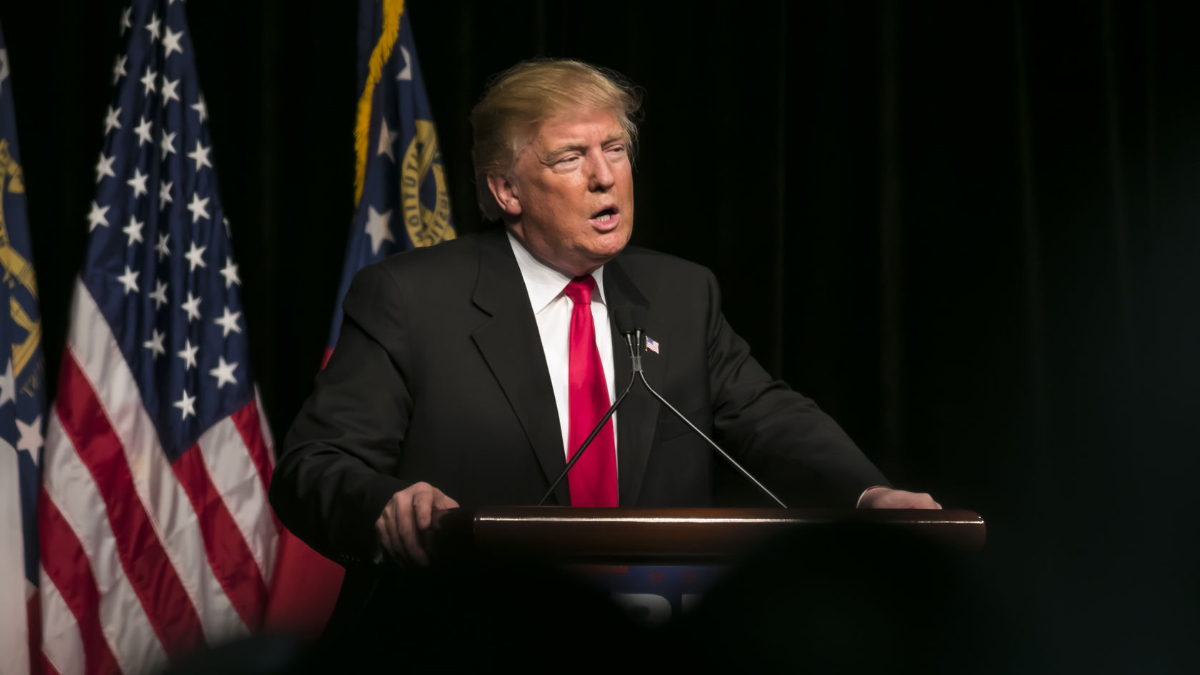Although during his campaign, President Trump touted what he would do in his first 100 days—repeal and replace Obamacare, pass a $1-trillion-dollar infrastructure program, and build a wall on the U.S.-Mexican border and get Mexico to pay for it—he now calls the measure of what a president can get done in that period a “ridiculous standard.” Live by the sword, die by the sword. Yet his change in attitude has some merit.
The media’s habit of measuring a president’s accomplishments after such a short time in office originated in 1933 with Franklin D. Roosevelt’s touting of what he would do in 100 days to remedy the Great Depression, the worst economic crisis in American history. During that period, FDR signed 76 bills into law and began initiating his New Deal program—a frenetic pace of activity that all future presidents have been unfairly measured against. However, FDR did have the advantage of needing to urgently address a harrowing crisis, with collapsing banks and severe unemployment, and a large Democratic congressional majority that also needed to show progress in combatting the economic cataclysm.
More important, and never reported on by an FDR-friendly media (then and now), is that FDR’s slapdash “do something...anything” New Deal programs actually prolonged the economic doldrums. Even World War II, coming along for the United States in 1941, created a false prosperity, with economic growth in non-defense sectors of the economy growing at lower rates than even during the depression. Only after the war, with FDR dead, did the economy genuinely rebound—as resources were returned from the bloated wartime government sector (more than 40 percent of the economy) to the private sector.
Thus, the media, always chasing meaningless process indicators, didn’t then—and doesn’t now—focus on the quality of the policies being advocated and implemented by presidents. In short, it’s quality, not quantity, that matters. The worst possible outcome is for any president to be ineffective by hastily trying to pass good legislation or to be very effective in rapidly passing large amounts of bad legislation. President Trump may do both.
Already, Trump’s initial foray into Washington’s swamp, which he pledged to drain, instead bogged down in a rushed and failed attempt to repeal and replace Obamacare. Appearing to learn little from the experience, he may again to try to ram it through Congress, somehow expecting different results. Often more time is needed to get the details of even intuitively good policy right and build a coalition for its passage.
Also, the ordering of policy initiatives is important. Tactically, Trump would have been much better off to try to pass his horrific $1 trillion infrastructure program first, gaining bipartisan support for the likely porkfest before attempting to tackle health care. The bipartisan goodwill would have made working on a health care bill much easier. Democrat Bill Clinton made the same mistake early in his presidency, when he allowed Hillary to wade into the morass of health care before passing a laudably courageous bipartisan reform of welfare, which he had been advocating since being governor of Arkansas. Again, the bipartisan goodwill might have helped during his quest for an even worse and more costly health care bill than Obamacare—Hillarycare—which fortunately failed in Congress.
However, with a $20 trillion federal debt, the United States cannot afford such massive federal infrastructure program, which inevitably will be logrolled into a bill that will send federal dollars to infrastructure projects around the country with potent political backers rather than to those most needed. If one doubts this outcome, one should remember Obama’s pork-filled “stimulus” bill, which did little to goose the anemic economic growth achieved after the Great Recession that began at the end of George W. Bush’s second term.
But don’t we at least need the infrastructure of a “big, beautiful” border wall to keep job-stealing Mexicans and Central Americans out of the US of A? With the Great Recession and subsequent slow U.S. economic growth, this inflow has been reduced dramatically. At any rate, such immigrants usually do jobs that Americans will not do. Also, such immigration will keep our country young, so that we won’t have the economically debilitating aging problem with which countries such as Japan, Italy, China, and Russia will be afflicted. Furthermore, in the United States, immigrants represent about 13 percent of the population but start twenty-five percent of businesses, the engine of economic growth. In short, immigration—even illegal immigration—is an economic no-brainer.
Even if the economically ill-advised policy of keeping immigrants out continues, is a costly $20 billion-plus border wall really the answer? Newsflash: the U.S. taxpayer, not Mexico, will end up being saddled with paying for the monstrosity. Besides, many illegals in the United States come here legally on visas and then overstay them. And after the wall is built, will illegal migrants find other ways to get into the country, such as by boat or by tunneling under the edifice?
Thus, Trump’s change of heart toward the media’s infatuation with how much a president gets done in the first 100 days, deeming it a “ridiculous standard,” is self-serving but well-founded. Such a standard measures a president’s effectiveness in getting his or her program passed within a short period rather evaluating how successful a chief executive is in enacting good policies for the republic. We should stop using it.

















